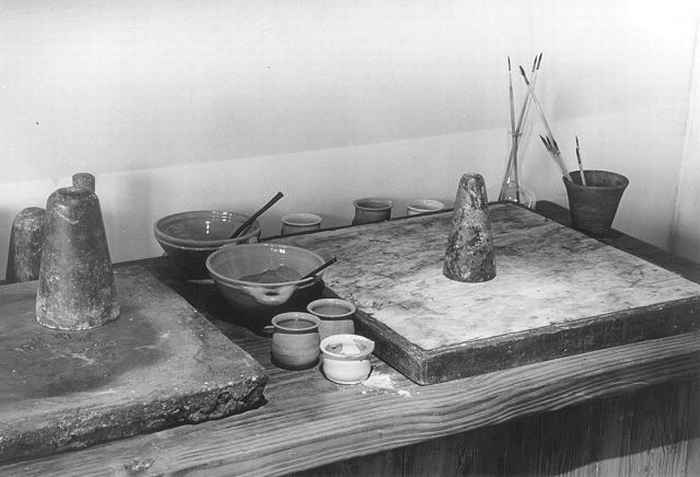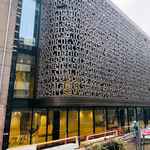ACSEM Object Colloquium: The Muller
- Date
- 14 March 2023
- Time
- 15:30 -17:00
- Location
- University Library
- Room
- Doelenzaal
Handling the muller required skill, stamina, an intimate knowledge of the properties of the individual pigments and their response to the oil, and would need to match the effect the painter wished to achieve.
Maartje Stols-Witlox, associate professor paintings conservation at UvA, regularly takes up a muller herself and reconstructs historical paint recipes in order to gain insight into historical artistic practices. Sensory methods enrich her study into historical paintings and historical recipe books. Using the muller, she can learn how pressure, speed, and length of mulling co-determine how a paint flows from the brush – thin, thick, buttery, syrupy – and thus how paint making relates to the look of a painting. The muller thus becomes not only a tool to make paint, but also a research instrument that allows us to explore how material properties relate to image quality.
Spoken language: English.
Drinks on location (at the UB) afterwards.
Everyone is welcome at the lecture; registration is not necessary.
Amsterdam Centre for Studies in Early Modernity (ACSEM)
ACSEM is formerly knows as Amsterdam Centre for the Study of the Golden Age. The new name comes with a new annual program - the Object Quolloquia Series. The series has the overarching theme: Exploring the World through the Material Turn. All speakers have taken up the challenge of creating a coherent, interdisciplinary program. Thanks to them, it promises to be a year of in-depth discussion and new acquaintances. The full annual program can be found below.
The Object Quolloquia Series
The Object Colloquia Series explores the world through the material turn. Each interdisciplinary duo of speakers takes one object or product as a point of departure to study and discuss various aspects of Early Modern art, culture, and history. These series are organized by the Amsterdam Centre for Studies in Early Modernity (ACSEM).

